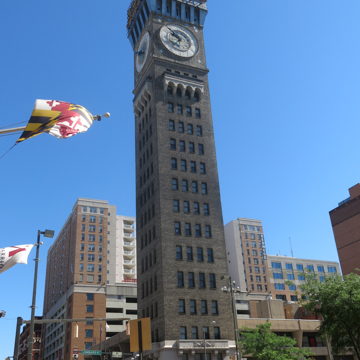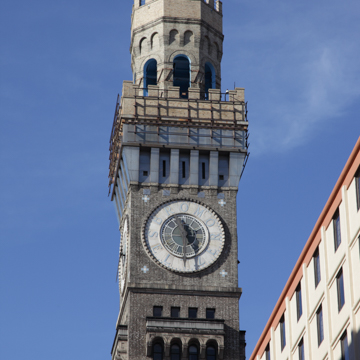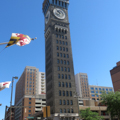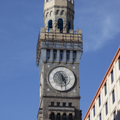The signature structure of Baltimore’s historic skyline is actually a remnant of the former Emerson Drug headquarters and laboratory that was demolished by the City of Baltimore in the late 1960s. It was built by Captain Isaac E. Emerson, inventor of the Bromo-Seltzer headache/indigestion remedy and founder of the Emerson Drug Company. Emerson’s flair for self-promotion and local boosterism extended to his company headquarters, which featured a fifteen-story campanile modeled on the Palazzo Vecchio in Florence, Italy.
Part of an otherwise conventional building, this dramatically tall corner tower served as a bold advertisement for the company’s most successful product. Its clock was purported to be the largest four-dial gravity-driven nonchiming clock in the world, with faces twenty-four-feet in diameter displaying the words “Bromo Seltzer.” Until structural concerns required its removal in 1936, the top of the crenellated tower featured an illuminated fifty-one-foot high rotating steel Bromo-Seltzer bottle visible for miles. Since 2008 the tower has housed a series of artists’ studios and exhibit space, with tours available of the clockworks and a collection of Bromo Seltzer and Maryland glass bottles. The clock underwent a major restoration in 2015–2017 to return it to its original gravity-driven operation.







